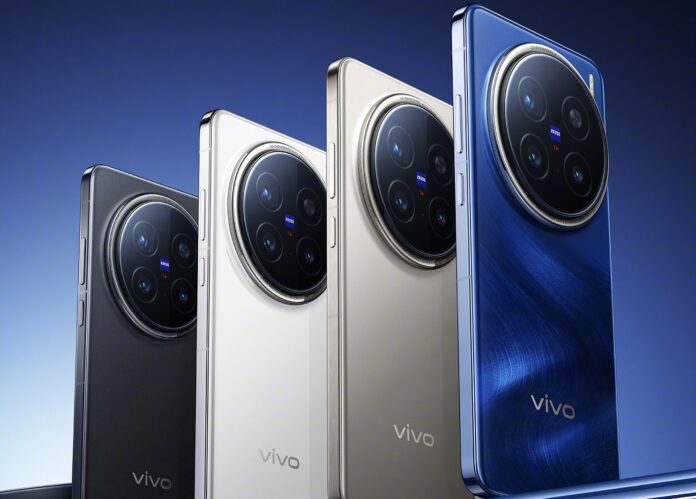Vivo has unveiled the X200 Pro and X200 Pro mini, focusing on design, photo and video quality, and performance.
The X200 Pro is available in Carbon Black, Titanium Gray, Moonlight White, and Sapphire Blue. These colors create visual effects reminiscent of ocean waves as the light changes. Vivo claims that the device has a translucent “light glass” that creates a gem-like shine.
The X200 Pro mini is available in Titanium Green, Light Pink, Plain White, and Simple Black. The Titanium Green model is reminiscent of the natural tones of nature, while the Light Pink model is reminiscent of cherry blossoms with a metallic sheen. The X200 Pro mini offers a matte glass back.
Both the phones are flatter than their predecessors in the X100 series. The X200 Pro sports a 6.78-inch Quad Curved display, while the X200 Pro mini has a flat 6.31-inch screen. The larger display on the vivo X200 Pro has 1.63mm bezels on all sides. The display is an LTPO panel with a variable refresh rate of up to 120Hz, a maximum brightness of 4,500 nits, and Dolby Vision support.
Both models are powered by the new MediaTek Dimensity 9400 processor, created in collaboration with vivo. The SoC is built on MediaTek’s second-generation 3nm process technology and features a Cortex-X925 super core with a clock speed of up to 3.626 GHz. The graphics are handled by a 12-core GPU, which delivers excellent gaming performance. vivo X200 Pro comes with the new OriginOS 5 operating system, which includes AI features such as Origin Island and AI Circle to Search.
Thanks to the third-generation Silico Anode technology, vivo was able to equip the X200 Pro with a 6,000 mAh battery, while the X200 Pro mini has a 5,700 mAh battery. Both devices support 90W fast charging and 30W wireless charging.
Both versions of the X200 Pro feature a triple-camera setup with Zeiss T* optics and the vivo V3+ image processing chip that’s also found in the vivo X100 Ultra. The main camera is equipped with a Sony LYT-818 sensor, which is a 1/1.28-inch sensor manufactured using a 22nm process, an f/1.57 lens, and Optical Precision Calibration technology. Despite being smaller in size than the X100 Pro, Vivo claims that this sensor outperforms it in video and is equally capable in stills.
The V3+ chip in the vivo X200 Pro supports 4K HDR Cinematic Portrait shooting, which the company calls an industry leader. 4K video can reach 120 fps for cinematic slow-motion, and 4K HDR Dolby Vision recording is also available at up to 60 fps. For advanced users, there is the ability to record 4K video in 10-bit Log format with a full focal range and a frame rate of up to 60 frames per second.
The main new feature is the 200-megapixel Zeiss APO telephoto camera found on the X200 Pro. It’s the same unit found on the X100 Ultra, with 85mm (3.7x) zoom and a bright f/2.67 lens. The X200 Pro mini has a less impressive but still decent 50-megapixel sensor with a 70mm f/2.6 lens and 3x zoom.
Both models also get a 50-megapixel ultra-wide-angle camera with autofocus and an f/2.0 lens, as well as a 32-megapixel selfie camera with an f/2.0 aperture.
vivo X200 Pro is available in 12/256GB, 16/512GB, 16GB/1TB, and a special Satellite Edition with 16GB RAM and 1TB storage. vivo X200 Pro mini is available in 12/256GB, 16/512GB, and 16GB/1TB.





